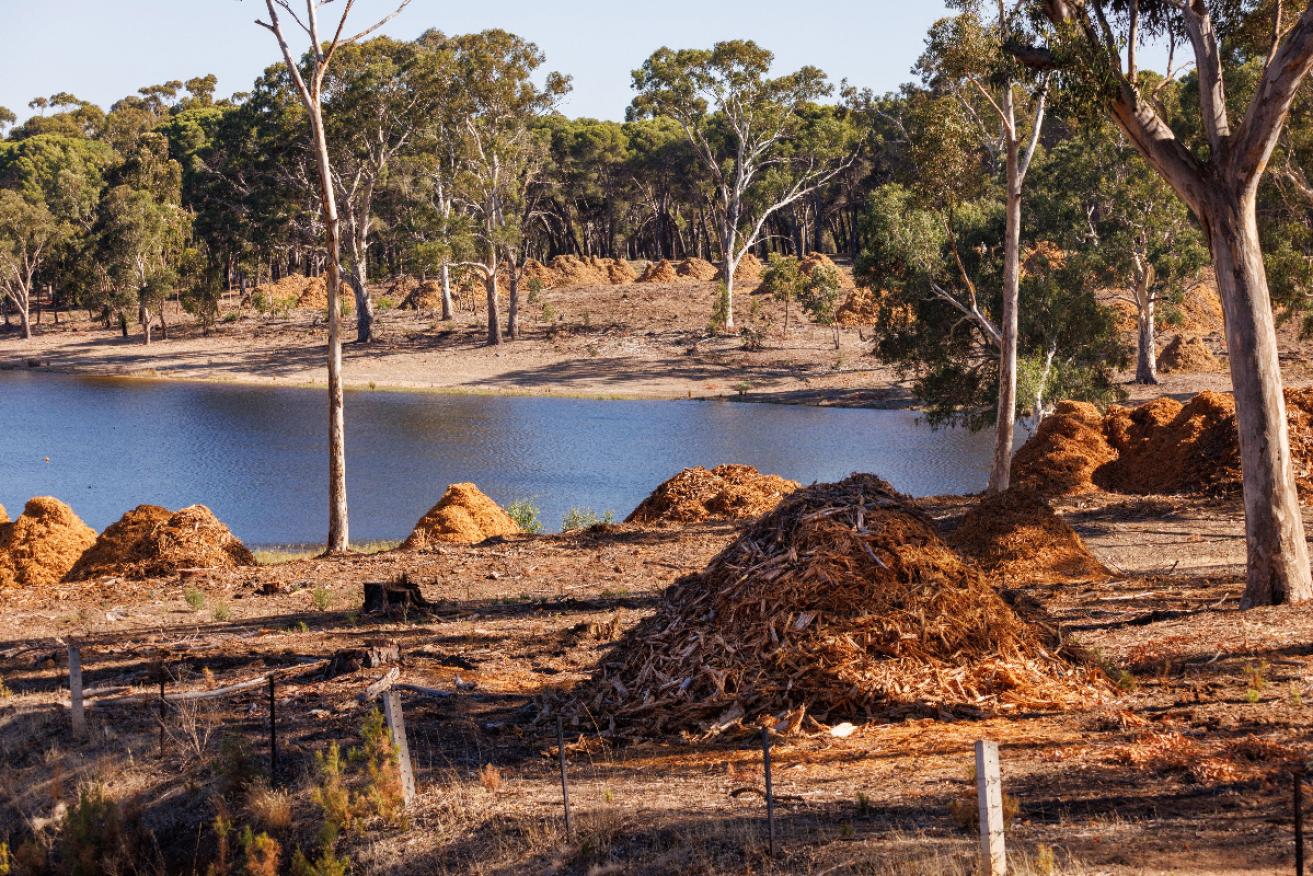Nearly 800 trees axed after pest infestation
Hundreds of trees have been felled at Hope Valley Reservoir and a Tea Tree Gully reserve amid an insect infestation of giant pine scale.


Hundreds of trees infected with giant pine scale have been cut down in the Tea Tree Gully area. Photo: Tony Lewis / InDaily
Approximately 190 infected trees have been cut down at Elliston Reserve in Adelaide’s north-east since September, while about 600 have been removed from the Hope Valley Reservoir nearby.
All trees infected with giant pine scale were introduced pine species.
Giant pine scale is an insect which feeds exclusively on plants in the Pinaceae family, such as pines, firs and spruces. The pests can cause defoliation, branch dieback, desiccation and tree death.
Native to the Mediterranean region, the bugs have previously been detected in Melbourne and Adelaide, and were detected in the Hope Valley Reservoir and Elliston Reserve last year.
Giant pine scale is now regarded as an established pest in Australia, having infested 4000 trees in Victoria, which have been contained to prevent a further spread.
South Australian Forest Products Association CEO Nathan Paine said “with 128,000 hectares of Radius Pine in South Australia, we need to protect the businesses and livelihoods of those working in the forest and timber industries”.
“If this insect reaches any of our commercial pine plantations it would have a devastating impact on our state’s economy and regional communities,” he said.
“Forestry in South Australia contributes almost $3 billion to the state’s economy, [and] employs over 21,300 people.”
The Department of Primary Industries and Regions South Australia (PIRSA) worked with the Tea Tree Gully Council to combat the outbreak in its region – the first detected in South Australian since 2018.
According to PIRSA, removal of infected trees is the only “permanent and effective” treatment for the pest, with giant pine scale requiring a living host tree to survive.

The remnants of the felled pine trees will be quarantined for a minimum of six months. Photo: Tony Lewis / InDaily
Tea Tree Gully Council operations general manager Felicity Birch said the impact of the insect was “significant”.
“We understand that it’s confronting for locals to see these established trees be removed so quickly, but it was a necessary measure to protect further losses elsewhere,” she said.
A PIRSA spokesperson old InDaily the felled tree material was being processed into a landscape-grade product before being quarantined for a minimum of six months at government site not accessible to the public.
Elliston Reserve is managed by the City of Tea Tree Gully, and owned by the state government. The Hope Valley Reservoir was opened to the public by the government in 2020.
Revegetation of both sites will be separate projects, with plans for both still underway.

Revegetation plans for both areas are yet to be announced, with the Tea Tree Gully Council saying they will seek external funding for the project. Photo: Tony Lewis / InDaily
PIRSA reported in November last year that SA Water was “developing a rehabilitation plan for priority areas within its Hope Valley Reservoir Reserve”.
Tea Tree Gully mayor Marijka Ryan said the council would “commence looking into high-level options and estimates to revitalise Elliston Reserve after the Giant Pine Scale outbreak and significant tree loss”.
“We will also seek external funding opportunities to support the revitalisation,” Ryan said.
When plans to axe the trees were first discussed in September, local councillor Blake Lawrenson said the council was “hopeful that the site can be redeveloped… so the community can continue to enjoy this much-loved reserve”.
“Like our community, we’re saddened by the loss of the contaminated pine trees at Elliston Reserve and other affected sites,” Lawrenson said.
Correction: A previous version of this story wrongly stated Hope Valley Reservoir is in Adelaide’s south. The error was made in the production process.




